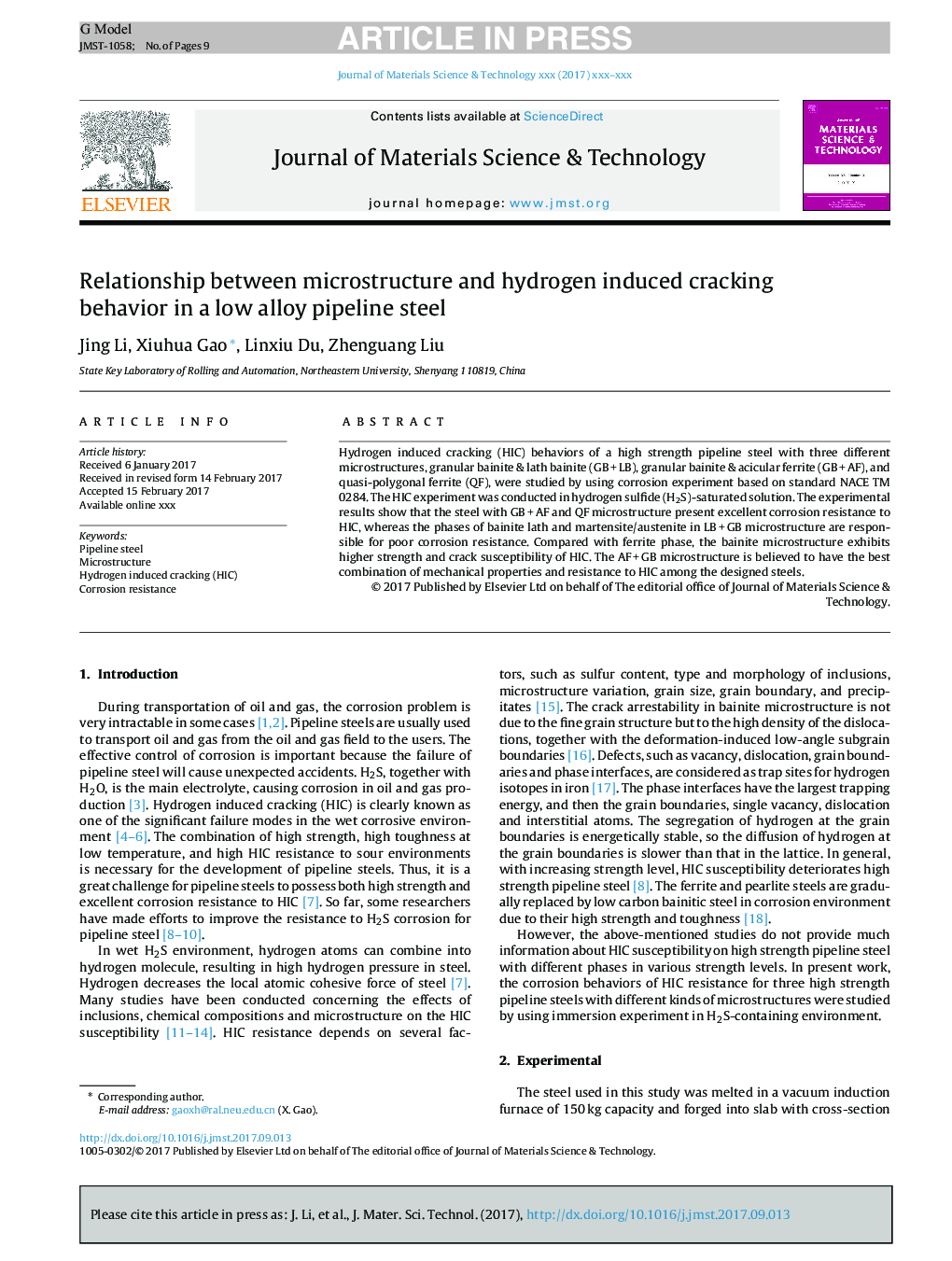| Article ID | Journal | Published Year | Pages | File Type |
|---|---|---|---|---|
| 7952134 | Journal of Materials Science & Technology | 2017 | 9 Pages |
Abstract
Hydrogen induced cracking (HIC) behaviors of a high strength pipeline steel with three different microstructures, granular bainite & lath bainite (GBÂ +Â LB), granular bainite & acicular ferrite (GBÂ +Â AF), and quasi-polygonal ferrite (QF), were studied by using corrosion experiment based on standard NACE TM 0284. The HIC experiment was conducted in hydrogen sulfide (H2S)-saturated solution. The experimental results show that the steel with GBÂ +Â AF and QF microstructure present excellent corrosion resistance to HIC, whereas the phases of bainite lath and martensite/austenite in LBÂ +Â GB microstructure are responsible for poor corrosion resistance. Compared with ferrite phase, the bainite microstructure exhibits higher strength and crack susceptibility of HIC. The AFÂ +Â GB microstructure is believed to have the best combination of mechanical properties and resistance to HIC among the designed steels.
Related Topics
Physical Sciences and Engineering
Materials Science
Materials Chemistry
Authors
Jing Li, Xiuhua Gao, Linxiu Du, Zhenguang Liu,
